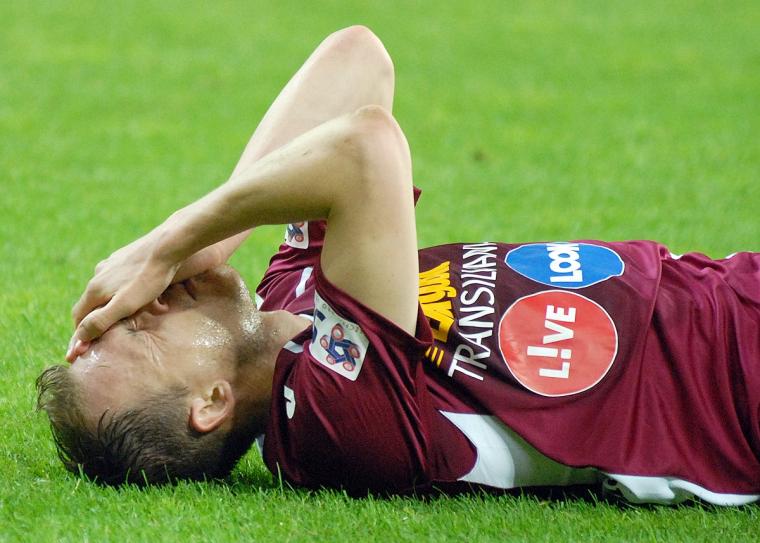
The recent announcement that former Major League Soccer player Scott Vermillion suffered from chronic traumatic encephalopathy (CTE) gave him the dubious distinction of being “the first American professional soccer player with a public case” of the degenerative brain disease, according to The New York Times.
Vermillion spent four seasons in the league and died on Christmas Day 2020 of acute alcohol and prescription drug poisoning at age 44. In late 2021, he was diagnosed with the CTE, which has been linked to memory loss, depression and aggressive or impulsive behavior — primarily in former deceased football players who suffered multiple concussions. CTE can only be diagnosed after death, and Vermillion’s CTE case became public in late June.
“Soccer is clearly a risk for CTE — not as much as football, but clearly a risk,” Dr. Ann McKee, director of the CTE Center at Boston University told The Times.
“We have to understand the gravity of the situation,” added Brandi Chastain, who played on two Women’s World Cup championship teams and has publicly pledged to donate her brain to CTE research. “Talking about concussions in soccer is not just a hot-button topic. It’s a real thing. It needs real attention.”
Soccer has a history of not taking concussions all that seriously.

“In protocols first introduced in 2014, Europe’s governing body UEFA said the referee can stop the game for up to three minutes ‘to allow the injured player to be assessed by the team doctor,’” according to a 2019 Yahoo!Sports report. “A player will only be allowed to continue ‘on specific confirmation by the team doctor to the referee of the player’s fitness.’
FIFA also mandates the three-minute rule and emphasizes that team physicians, and not managers, have the final say on whether a player can continue. It is quite clear that these protocols are either insufficient or not being obeyed. Essentially, there is a conflict of interest when a doctor employed by the team has the final say on a concussion call.”
In 2021, new guidance specifically focused on training sessions (where the majority of heading the ball occurs) that was introduced to meet the requirements of each level of English football and “applicable to clubs in the Premier League, EFL, Barclays Women’s Super League, FA Women’s Championship, the National League System, the Women’s Football Pyramid Tiers 3 and below, all grassroots football and across the England national teams,” according to TheFA.com.
U.S. Soccer, meanwhile, “has extensive concussion protocols, and it bans or limits headers in children 13 and younger,” according to CBS News. “But when it comes to sub-concussive hits in older players, U.S. Soccer [said] it is awaiting more research.”
Now, in the wake of the tragic news about Vermillion — who reportedly spent the final 10 years of his life withdrawing from his family and struggling with substance abuse and increasingly erratic behavior — other former players are speaking up.
Bruce Murray, who at the time of his retirement in 1995 was the all-time leading scorer for the U.S National Team, told CBS News that his aggressive play took a toll. He recounted one match in Saudi Arabia during which an opponent’s knee struck his head.
“I was on my hands and knees, trying to find where my equilibrium was, but for the next six weeks to a month, I would go places and not know why I was there,” Murray told CBS News’ chief medical correspondent Dr. Jon LaPook. “I think U.S. Soccer needs to address this. It’s called football all around the world. What if you rewrote the rules? Do you have to head the ball?”
A 2020 Purdue University study found that up to 22 percent of soccer injuries are concussions that can result from players heading the ball.
The study, conducted by Purdue engineers, found that inflating balls to pressures on the lower end of ranges enforced by soccer’s governing bodies, such as the NCAA and FIFA, could reduce forces associated with potential head injury by about 20 percent. If the ball gets too wet, though, it can quickly surpass the NCAA weight limit for game play, researchers said.
“If the ball has too high of a pressure, gets too waterlogged, or both, it actually turns into a weapon. Heading that ball is like heading a brick,” said Eric Nauman, a Purdue professor of mechanical engineering and biomedical engineering. “You can’t control how hard a player kicks a ball. There are other ways to decrease those forces and still have a playable game.”
Patrick Grange, a former soccer player who died in 2012 at age 29, was the first amateur soccer player to have CTE, according to The New York Times. He had amyotrophic lateral sclerosis and was diagnosed with CTE in 2014.
According to The Times, “Grange sustained a few memorable concussions, his parents said — falling hard as a toddler, being knocked unconscious in a high school game and once receiving 17 stitches in his head after an on-field collision in college.”
“He had very extensive frontal lobe damage,” McKee said at the time, after examining Grange’s brain. “We have seen other athletes in their 20s with this level of pathology, but they’ve usually been football players.”

